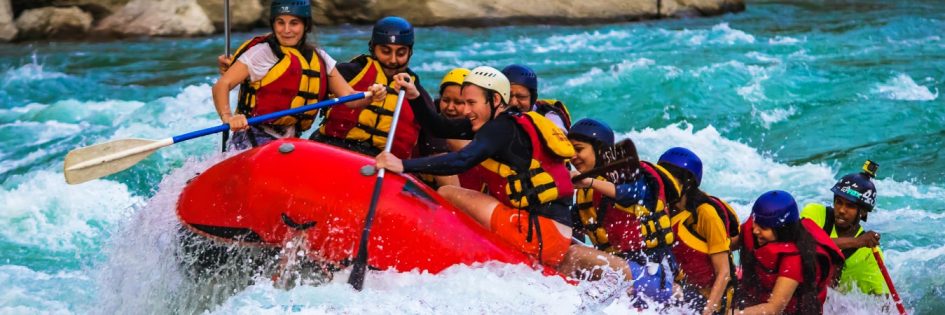Do you ever wake up in the middle of the night and wish to abandon ordinary life and jump into the deep end of life? Imagine this: you’re holding on to your paddle tightly, your raft jerking through powerful rapids, and the mist from the waterfall hitting you on the face and on all side’s fantastic rocks and uncharted land that seems pulled from the dream. This white-water rafting will arouse your adrenaline and bring excitement and the sound of nature you will never hear when flying in a plane.
If you ever wanted to know how it feels to tackle a task and come out triumphant knowing top-grade views of nature surround you, this is the place to be. From the commercially run New River Gorge to the hardcore Grand Canyon rapids, white water rafting trips are an experience that is not just a sport; it’s an experience that stays in your memories long after your rafting trip.
What is White Water Rafting?
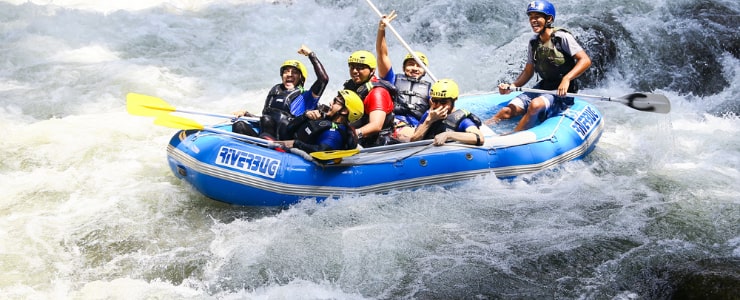
Whitewater rafting is a water sport where adventure seekers float through rapids in a canoe, popularly known as a raft. Something is fulfilling about overcoming rushing water and doing it with friends or family. Rafting combines aspects of surfing, kayaking, and mountaineering and tests your physical and mental toughness.
This sport has undergone many changes. It first originated in the early 19th century. Although the use of rafts was for transport purposes, in the middle of the 20th century, a new way of exploring was recreational or adventurous drifting.
Different Types of Whitewater Rafting Trips
- Family-Friendly Floats: Ideal for new paddlers or people with children, they don’t include challenging rapids and currents and are primarily interested in beautiful landscapes.
- Intermediate Runs: These are middle-grade rapids that require people in the boat to paddle together and some level of boat management skill.
- Advanced Rapids: Technical rapid water and steep terminations are for those who want the wildest experience in life.
5 Best Places for Experiencing White Water Rafting Trips
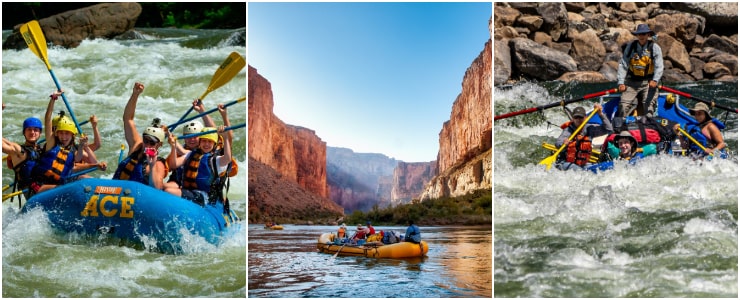
1. New River Gorge (USA)
Known as the Grand Canyon of the East, the New River Gorge of West Virginia is a crucial destination for whitewater rafters. Its scenic values and quick water range from class III to class V and are best suited for professionals. Even beginners can enjoy whitewater rafting at the New River Gorge, with sections offering breathtaking views and gentle rapids that provide an easy and enjoyable ride.
2. Grand Canyon (USA)
Many extreme sporting enthusiasts consider white water rafting in the Grand Canyon an experience with excellent rapids to view fantastic sites. The Colorado River provides rafters with the right combination of adrenaline-pumping water and stretches. It should come as no surprise that white water rafting Grand Canyon is one of the most sought-after adventure tours in the world.
3. White Salmon River (USA)
The White Salmon River is situated in Washington State, particularly in the forest-covered area, and forms undoubtedly an attractive start. One of the more striking features of this type of destination is that it can accommodate a wide range of rider abilities. This is why the white salmon white water rafting provides any adventure lover with one of the most amazing experiences ever.
4. Tully River (Australia)
If you are considering tropical rafting, the Tully River in Queensland can beat all the others. It is rich in warm water, and its active landscape is a favourite spot for extreme sports lovers. Tully white water rafting features several rapids from class III to IV and a thrilling experience even more by featuring its rainforests.
5. Shotover River (New Zealand)
New Zealand is also famous for its beautiful, unreal castles; the Shotover River, near Queenstown, is one of the most popular places for white water rafting. It is renowned for its cold river and includes the fastest rapids of a river that one can imagine for a perfect rafting tour. Shotover river rafting near narrow valleys and cliffs creates an extra thrill for the overall exercise.
Gear Up: Essential Equipment for White Water Rafting
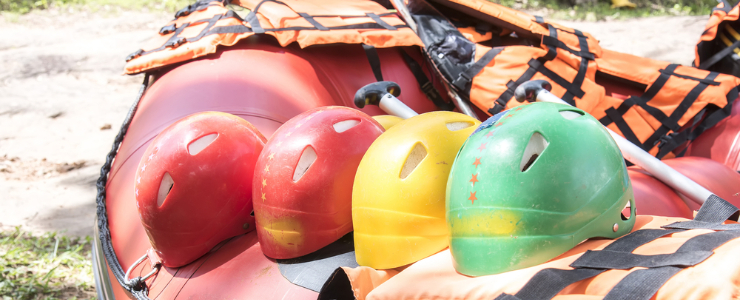
To fully enjoy your whitewater adventures rafting trip, having the right equipment is essential:
- Raft: The star of the show. Select a long-lasting inflatable raft appropriate for a particular river class.
- Paddles: Durable and lightweight are important to ensure excellent flow during rapids.
- Helmet: Make sure your head doesn’t hit rocks or anything like that.
- Life Jacket: Thoroughly essential regarding safety; it would provide steadiness in turbulent waters.
- Wetsuit/Dry Suit: Aids in temperature regulation and is effective in cold river water.
- Dry Bag: Convenient for keeping random items such as phones, cameras, and snacks where they won’t get wet.
- Safety Gear: An example is throwing ropes, carabiners, and first aid kits in case of an accident.
Pro Tip: It is also important to consider the water temperature and class of the river before choosing equipment. The most important aspect you should consider is safety.
White Water Rafting Trips: What to Expect
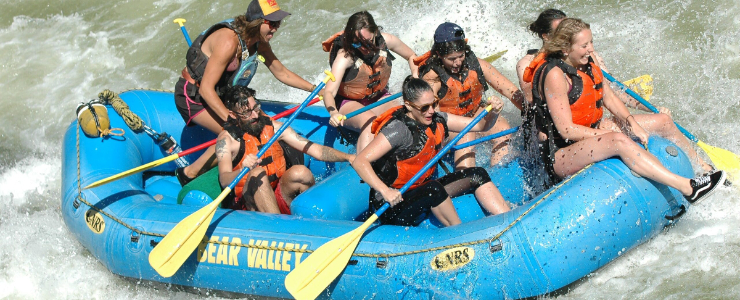
A typical whitewater rafting trip is a mix of adventure, preparation, and teamwork:
- Arrival & Orientation: Guides brief clients on safety measures to be followed during the journey, together with a general orientation. This is your opportunity to acquaint yourself with the equipment and become at least acquainted with some of the fundamentals of paddling. lf with the equipment and become at least acquainted with some of the fundamentals of paddling.
- The Adventure Begins: On the water, however, cooperation is crucial, as all the individuals are in charge of running the boat. The strokes of the paddle on the river must be in harmony to manoeuvre through the deeper.
- Riding the Rapids: When you are in the boat, the faster the water currents, the more exciting they become. Every rapid has its class depending on its complexity, which starts with Class I—Class II: Gentle and Class V: Extremely Hard, respectively.
- Breaks & Scenic Stops: There are often opportunities to stop and admire the view, photograph something, or bathe in quiescent waters.
Safety Tips for White Water Rafting

Stay safe with these tips:
- Know Your Rapids: Learn more about the river’s classification and find the level at which you are comfortable riding.
- Follow Your Guide: Pay close attention to what your guide is telling you and prevent accidents.
- Stay Calm in the Water: If you fall out, don’t panic. Lay on your back with your legs down the stream and wait for rescue.
Latest Posts
- Ride the Wind and Waves: A Complete Guide to Kiteboarding Adventures
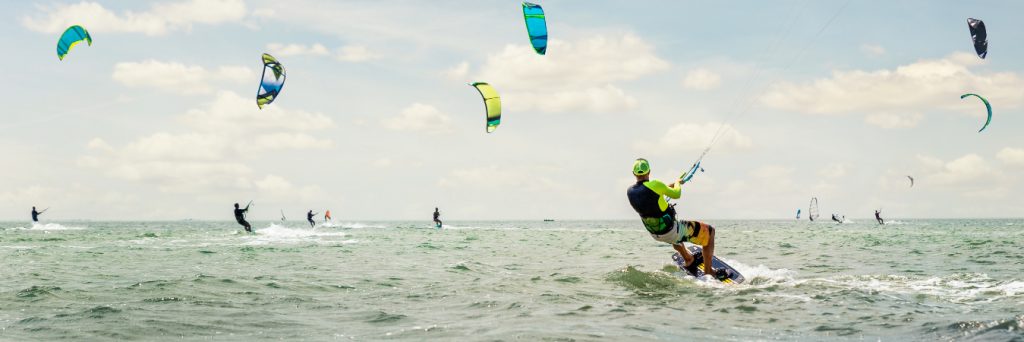
- Best Things to Do in Fiji: Adventure, Culture, & Nature
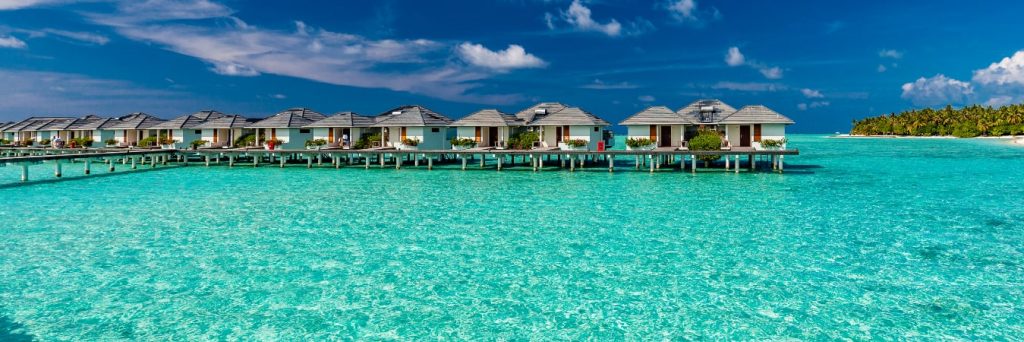
- Everything You Should Know About Elephant Jungle Sanctuary Phuket

Wrapping Things Up
There is nothing as exhilarating as whitewater rafting. It is a sport that challenges the limits regarding the calluses or friendships one makes, including appreciating good natural scenery. Whether you are conquering the rapids of New River Gorge, the Bighorn River floating over the Grand Canyon, or enjoying the tropical waters on Tully River, each ride tends to be unique.
Thus, take your equipment, gather your friends, and go on a trip where the challenging rapids await you.
Best Places for White Water Rafting FAQs
Is it possible for the newcomers to try white water rafting in the New River Gorge?
Absolutely! It has many parts that are ideal for novices, including sections with new and mild rapids.
When should one go white water rafting in the Grand Canyon?
The best period to accomplish this task is from April to October, when the water is usually well-saturated, and the climate is more or less appropriate.
Is having previous tracks to raft in White Salmon River necessary?
No. Professional guides are present, and there are parts for different difficulty levels.
Vaibhav is a content expert with a special knack for travel writing and unfolding facts about worldwide travel destinations. He creates engaging and interactive writing pieces for the target audience to know more about the place, activity, and things to do. With attention to detail in the B2B marketplace, Vaibhav brings a key focus toward meeting the goals and objectives of users.


